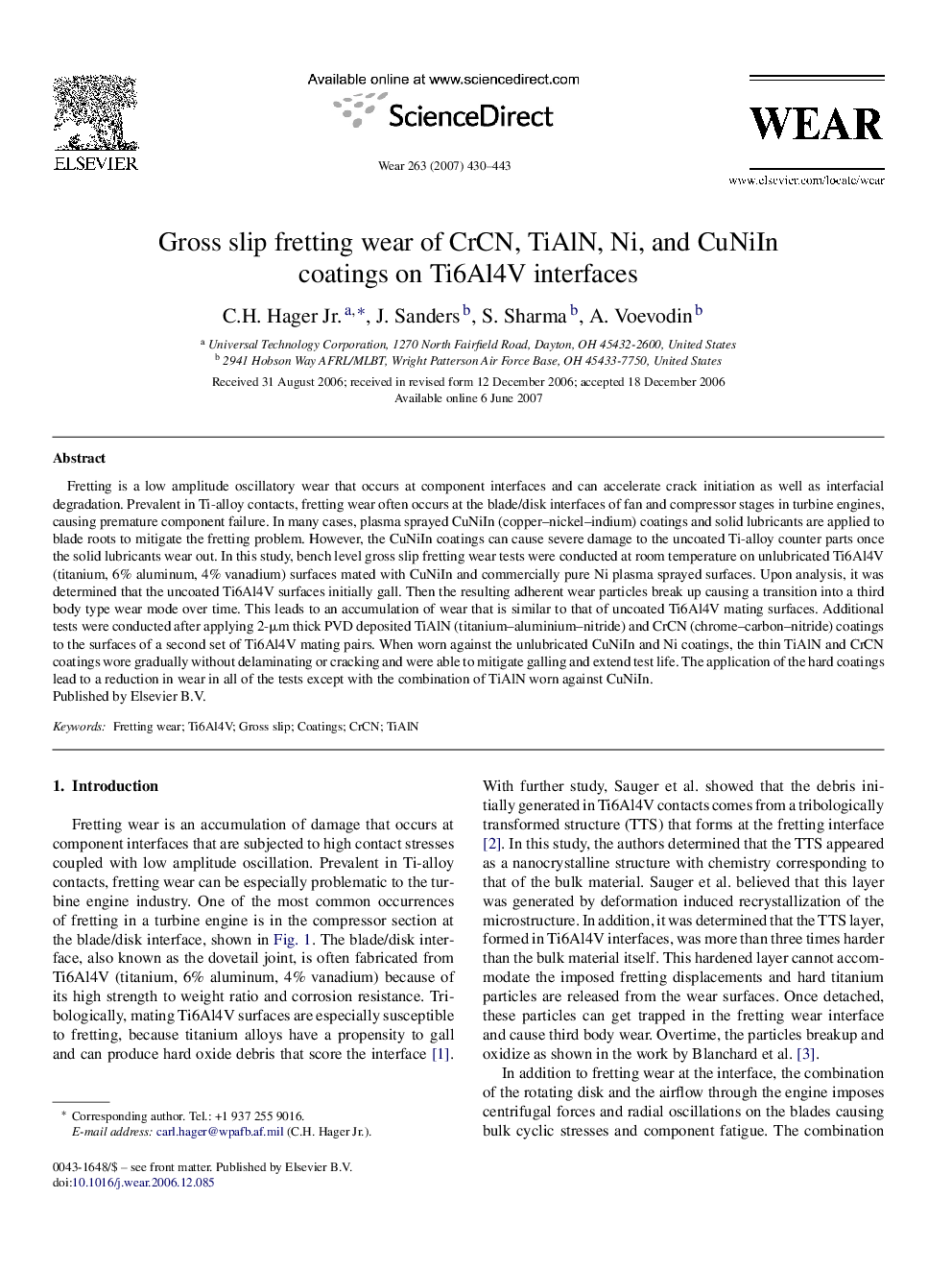| Article ID | Journal | Published Year | Pages | File Type |
|---|---|---|---|---|
| 619845 | Wear | 2007 | 14 Pages |
Fretting is a low amplitude oscillatory wear that occurs at component interfaces and can accelerate crack initiation as well as interfacial degradation. Prevalent in Ti-alloy contacts, fretting wear often occurs at the blade/disk interfaces of fan and compressor stages in turbine engines, causing premature component failure. In many cases, plasma sprayed CuNiIn (copper–nickel–indium) coatings and solid lubricants are applied to blade roots to mitigate the fretting problem. However, the CuNiIn coatings can cause severe damage to the uncoated Ti-alloy counter parts once the solid lubricants wear out. In this study, bench level gross slip fretting wear tests were conducted at room temperature on unlubricated Ti6Al4V (titanium, 6% aluminum, 4% vanadium) surfaces mated with CuNiIn and commercially pure Ni plasma sprayed surfaces. Upon analysis, it was determined that the uncoated Ti6Al4V surfaces initially gall. Then the resulting adherent wear particles break up causing a transition into a third body type wear mode over time. This leads to an accumulation of wear that is similar to that of uncoated Ti6Al4V mating surfaces. Additional tests were conducted after applying 2-μm thick PVD deposited TiAlN (titanium–aluminium–nitride) and CrCN (chrome–carbon–nitride) coatings to the surfaces of a second set of Ti6Al4V mating pairs. When worn against the unlubricated CuNiIn and Ni coatings, the thin TiAlN and CrCN coatings wore gradually without delaminating or cracking and were able to mitigate galling and extend test life. The application of the hard coatings lead to a reduction in wear in all of the tests except with the combination of TiAlN worn against CuNiIn.
